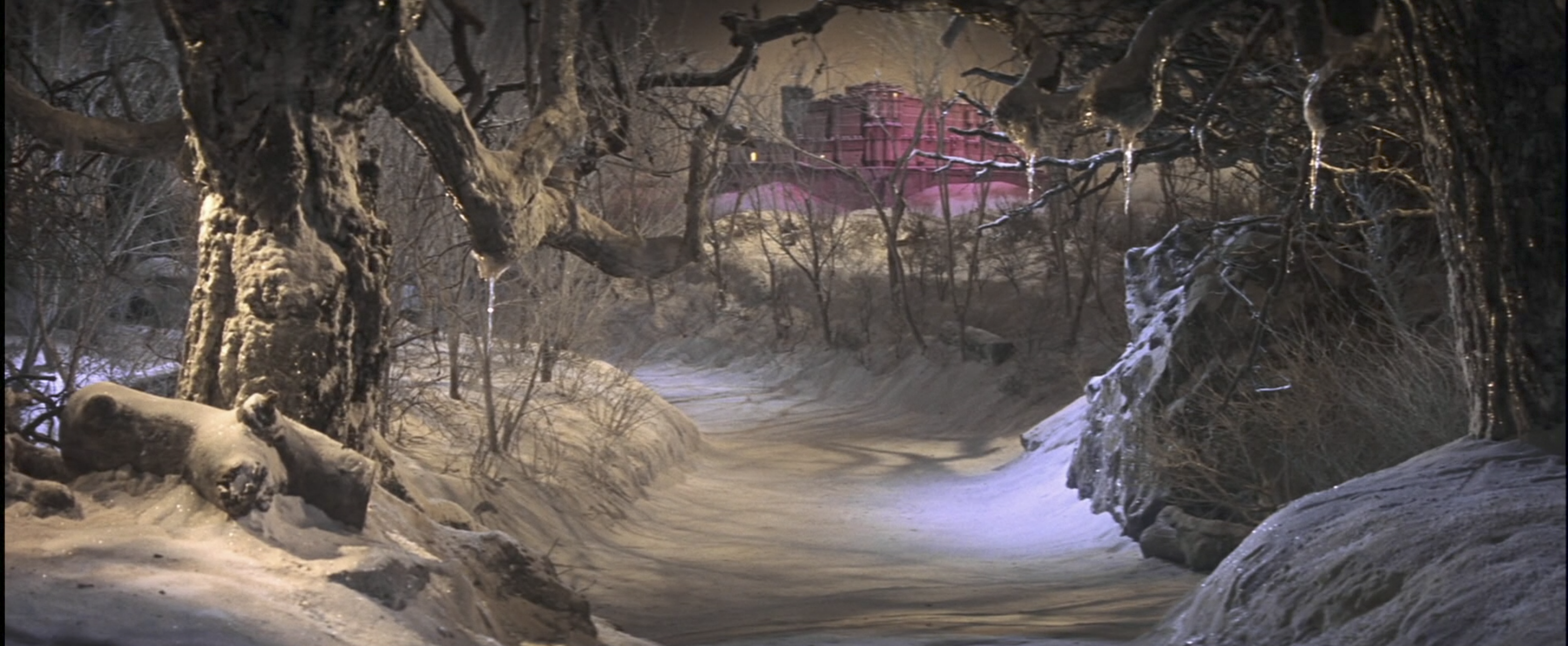"The Furniture," by Daniel Walber, is our weekly series on Production Design. You can click on the images to see them in magnified detail.
 Back in August, I wrote about two dramatically different ways of portraying Arthurian Legend on screen. To recap: the bright silliness of Knights of the Round Table (1953) looks like psychedelic compared to the bland grit of King Arthur (2004) and the gruff, imperial fantasia of King Arthur: Legend of the Sword (2017). But even these at least share a mild interest in engaging with English historical design. Camelot (1967), on the other hand, is a flighty fantasy of utter nonsense.
Back in August, I wrote about two dramatically different ways of portraying Arthurian Legend on screen. To recap: the bright silliness of Knights of the Round Table (1953) looks like psychedelic compared to the bland grit of King Arthur (2004) and the gruff, imperial fantasia of King Arthur: Legend of the Sword (2017). But even these at least share a mild interest in engaging with English historical design. Camelot (1967), on the other hand, is a flighty fantasy of utter nonsense.
Of course, this is why it’s such a delight to watch. It’s a furry, oversexed epic that sends its glamorous cast out into magical forests to sing Lerner and Loewe songs at the top of their extravagantly-adorned lungs. The film won Oscars for production designer John Truscott, art director Edward Carrere and set decorator John Brown, with Truscott taking home a second statuette for the costumes. Lavishly made and lavishly awarded, it’s a classic of committed inspiration.
Production was split between expensive studio sets and on-location shoots at two Spanish castles, the Alcázar and the Coca. Both stand in the Castilian city of Segovia and both demonstrate Moorish architecture. Neither looks a bit like England in either the Dark or Middle Ages, but even speculative realism is hardly the goal here. The studio model of the Coca, playing the role of Camelot, even gets to turn pink.
The interiors of are just as lavish. Much of the film takes place in King Arthur’s (Richard Harris) enormous bedroom/home office, nearly every inch of which is covered in luxurious fur. All of the wood is dark, every book is open and if something can be shaped like an owl, it probably is. While watching Camelot, a fun game is to pause and count how many dogs are in the frame. Find both here:
It’s impossible to overstate the fur. The (false, of course) dilemma faced by most Arthurian films is whether to represent the more theoretically accurate Dark Ages or the more aesthetically pleasing High Middle Ages. Camelot has ignored both, instead rushing toward a kind of neanderthal Europe, where it’s impossible to tell where one’s own hair ends and where something else’s begins. Arthur’s bedroom is like a cave, in which he and Guenevere (Vanessa Redgrave) live in the furry nudity of prehistory.
After all, this is really a movie about sex. If every surface is upholstered with soft animal fur, then every surface accommodates passionate rolling about.
Uncontrollable sexuality is also the cause of the inevitable disaster, sparked by the irrepressible (and real-life) chemistry between Guenevere and Lancelot (Franco Nero). This causes a political crisis at Camelot, though of course the details are left as vague as they are loud. This charming map, for example, isn’t exactly a helpful tool.

In the end, Arthur is like this novelty skull: woeful, disembodied and sporting a decorative antler for no obvious reason. He becomes his own Yorick, Camelot an infinite (or nearly, at 179 minutes) jest of most excellent furry fancy. Not that Shakespeare is an especially appropriate reference for this Arthurian legend, but neither is anything else in the movie - which is why it’s such a delight.







